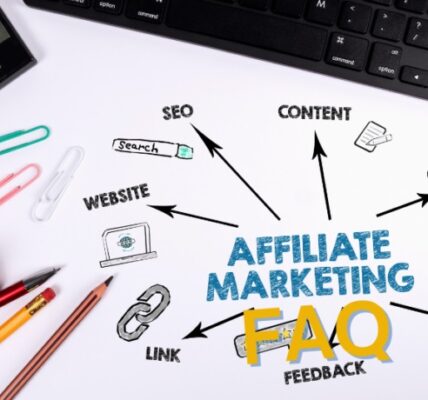In case you are operating an agency, it is important to know SEO metrics. However, what are SEO metrics? In simple terms, SEO metrics are the number points that assist you in determining the success of your search engine optimization campaign. Using proper metrics can enable the agencies to make right decisions, streamline campaigns, and show real outcomes to customers.
In this blog, we shall take you through five critical SEO measurements that an agency can rely on which include organic traffic, keyword positions, conversion rates, bouncing rate and quality and quantity of backlinks. At the end, you will understand what to measure as well as why these indicators are important and how to effectively utilize them.
1. Organic Traffic
To begin with, there is organic traffic. This is in terms of visitors that land on your site due to unpaid search engines. That is, these are individuals who come across your site through search engines such as Google.
Organic traffic must be monitored as it gives you an idea of the visibility of your site and performance with the search engine in general. The increase of the number of visitors typically leads to the increase of brand recognition, and in the long-term, it tends to be associated with the improvement of lead generation and business expansion.
Google Analytics, SEMrush, and Ahrefs are a very beneficial tool to measure organic traffic. Such systems give you a clue as to which pages are visited the most and the way users are accessing your site. It is possible to monitor this indicator to learn the efficiency of the applied SEO strategies and whether improvements are necessary (or not) by the agencies.
2. Keyword Rankings
Then, there is keyword rankings. Keywords ranking indicates your position in the search results of a particular keyword in the search engine. Follow-ups on these rankings will assist the agencies to know the degree to which their content suits the search requirements of users.
The importance of key words ranking is that they indicate the relevance of your site to the intention to search. When ranked higher, it becomes more visible and hence more leads or sales. Unless your pages are in the right keywords, you could be losing a nice traffic.
In order to monitor the effectiveness of the key words used, it is essential to conduct regular audits. To keep an eye on rankings and make changes when necessary, agencies usually resort to such tools as Moz and Rank Tracker. Maintaining keywords is a way of making sure that your content remains relevant and competitive.
Also keep in mind, when it comes to local keyword rankings, local search ranking can fluctuate, and it’s easy to miss opportunities. Checking them on seomodify.com gives a clear picture and helps you act fast.
3. Conversion Rate
Traffic and rankings are crucial but conversion rate is what counts the most regarding the business aspect of SEO success. Conversion rate is a percentage of visitors that accomplishes the necessary action in your site, which may be: to purchase a product, subscribe to a newsletter or to complete a contact form.
By emphasising on conversion rates, you can evaluate the quality of the traffic and not only the amount. At that, having thousands of visitors is not helpful, as long as none of them act.
A/B testing and landing page optimization can be applied to calculate and increase the conversion rates of agencies. Simple modifications, such as call-to-action enhancement or simplification of forms, can greatly increase conversions. This measure must be used to make sure that your SEO activities are paying off in real business terms.
4. Bounce Rate
The other significant measure is that of bounce rate that is the percentage of the visitors who exit your site after visiting a single page. When a high bounce rate is observed, then it is misleading that either the user did not happen to get what s/he was seeking or the material was not interesting to the user.
The importance of bounce rate analysis lies in the fact that it provides information on user interactions and relevancy of content. When people abandon fast, then it may be time to go back to the drawing board in terms of structure, usability or content of your site.
The agencies need to concentrate on site usability and compelling content to reduce the bounce rates. As an example, you can ensure that it is easy to navigate, increase the speed of accessing your site, and make your site interesting to the eye, and keep attracting the visitor to your site longer.
5. Quantity and Quality of Backlinks
At last, we should speak about backlinks. Backlinks are those links of other websites to your website. They also contribute significantly to the SEO since the search engines regard them as confidence in your content.
The quality of backlinks and their quantity are important. A quality backlink with an authoritative site will enhance the credibility and domain authority of your site whereas having a huge number of bad links can also serve against your interests.
The quality of backlinks can be evaluated by agencies with the help of such tools as Moz and Ahrefs, and the number of referring domains also requires attention. The better the websites that refer to your content are the better your SEO profile will be.
Conclusion
In a nutshell, there are five SEO metrics that every agency must base on and they are:
- Organic traffic – displays appearance and interaction.
- Ranking of key words – guarantees relevancy and accessibility.
- Conversion rate – is a measurement of quality of traffic.
- Bounce rate – means interaction of the user.
- Backlink quality and quantity – enhances authority and trust.
Being holistic on these metrics assists agencies in making more intelligent choices and achieving stronger outcomes to clients. SEO is constantly developing, and it is necessary to be informed about the latest tools, strategies, and metrics trends. With proper data, the agencies will be able to track the performance besides being able to lead actual growth.










